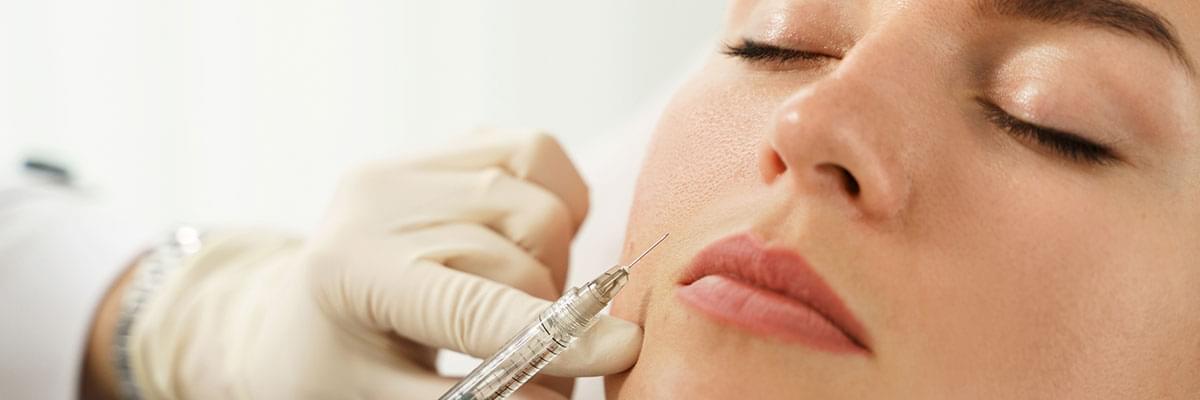
What can we do for you?
Dermal fillers are gel-like substances that are injected beneath the skin to restore lost volume, smooth lines, soften creases, or enhance facial contours. More people than ever are choosing this non-surgical cosmetic treatment to rejuvenate their appearance without going under the knife.Most dermal fillers are made from hyaluronic acid, a naturally occurring substance in the body that helps keep skin plump and hydrated. Other fillers may contain calcium hydroxylapatite, poly-L-lactic acid, or polymethylmethacrylate (PMMA), depending on the desired effect and longevity.
The treatment is typically quick, taking about 15 to 60 minutes depending on the areas treated. It involves minimal discomfort, and most patients can return to normal activities immediately afterward. A numbing cream or local anesthetic is often used to improve comfort during the procedure.
The most common areas for filler injections include:
- Cheeks
- Lips
- Jawline
- Under the eyes
- Nasolabial folds (lines from the nose to the corners of the mouth)
One of the major benefits of dermal fillers is the instant visible result. Unlike some other treatments that take weeks to show improvement, fillers provide immediate volume and lift.
Results can last anywhere from 6 months to 2 years, depending on the type of filler used and the individual's skin metabolism. Repeat treatments are usually required to maintain the results.
Are dermal fillers safe?
When administered by a licensed and trained professional, dermal fillers are considered safe. However, as with any cosmetic procedure, there are potential risks and side effects, such as swelling, redness, bruising, or in rare cases, more serious complications.
That’s why it's essential to consult a qualified practitioner and choose a reputable clinic. You can find more about safety guidelines and professional advice from trusted organizations like:
Dermal Fillers
and
NHS guide on dermal fillers
Is the treatment right for everyone?
Not all individuals are suitable candidates for dermal fillers. Those with certain medical conditions, allergies, or skin infections in the area to be treated should avoid the procedure. It's also not recommended for pregnant or breastfeeding individuals.
Before getting any injections, a full consultation should be carried out by a qualified professional. They will discuss your goals, assess your face and skin condition, and suggest the most suitable type of filler for your needs.
Dermal fillers are gel-like substances that are injected beneath the skin to restore lost volume, smooth lines, soften creases, or enhance facial contours. More people than ever are choosing this non-surgical cosmetic treatment to rejuvenate their appearance without going under the knife.
Most dermal fillers are made from hyaluronic acid, a naturally occurring substance in the body that helps keep skin plump and hydrated. Other fillers may contain calcium hydroxylapatite, poly-L-lactic acid, or polymethylmethacrylate (PMMA), depending on the desired effect and longevity.
The treatment is typically quick, taking about 15 to 60 minutes depending on the areas treated. It involves minimal discomfort, and most patients can return to normal activities immediately afterward. A numbing cream or local anesthetic is often used to improve comfort during the procedure.
The most common areas for filler injections include:
- Cheeks
- Lips
- Jawline
- Under the eyes
- Nasolabial folds (lines from the nose to the corners of the mouth)
One of the major benefits of dermal fillers is the instant visible result. Unlike some other treatments that take weeks to show improvement, fillers provide immediate volume and lift.
Results can last anywhere from 6 months to 2 years, depending on the type of filler used and the individual's skin metabolism. Repeat treatments are usually required to maintain the results.
Are dermal fillers safe?
When administered by a licensed and trained professional, dermal fillers are considered safe. However, as with any cosmetic procedure, there are potential risks and side effects, such as swelling, redness, bruising, or in rare cases, more serious complications.
That’s why it's essential to consult a qualified practitioner and choose a reputable clinic. You can find more about safety guidelines and professional advice from trusted organizations like:
American Society of Plastic Surgeons
and
NHS guide on dermal fillers
Is the treatment right for everyone?
Not all individuals are suitable candidates for dermal fillers. Those with certain medical conditions, allergies, or skin infections in the area to be treated should avoid the procedure. It's also not recommended for pregnant or breastfeeding individuals.
Before getting any injections, a full consultation should be carried out by a qualified professional. They will discuss your goals, assess your face and skin condition, and suggest the most suitable type of filler for your needs.
Conclusion
Dermal fillers are a popular and effective non-surgical solution for facial rejuvenation. With minimal downtime and instant results, they offer a safe way to enhance natural beauty when performed by skilled practitioners. Always do your research, choose licensed professionals, and never compromise on safety when considering any aesthetic treatment.
Dermal fillers are a popular and effective non-surgical solution for facial rejuvenation. With minimal downtime and instant results, they offer a safe way to enhance natural beauty when performed by skilled practitioners. Always do your research, choose licensed professionals, and never compromise on safety when considering any aesthetic treatment.
Back to Articles






















